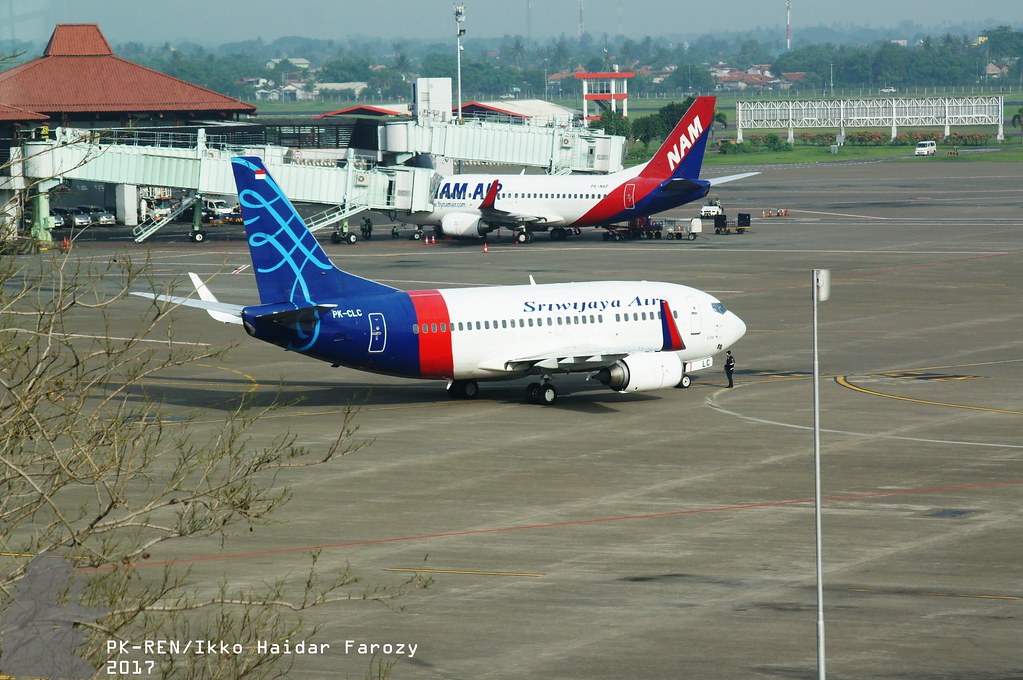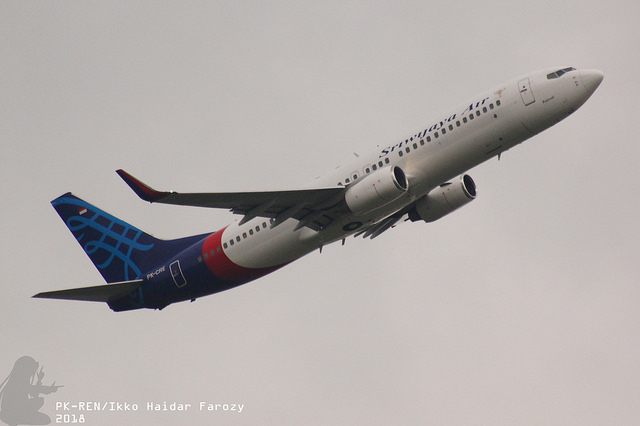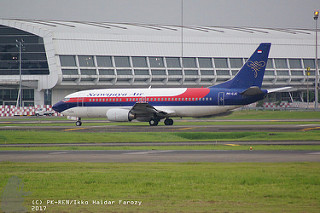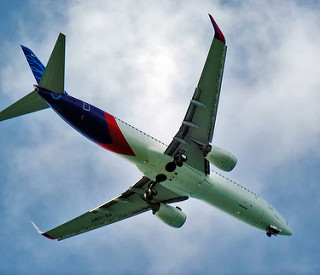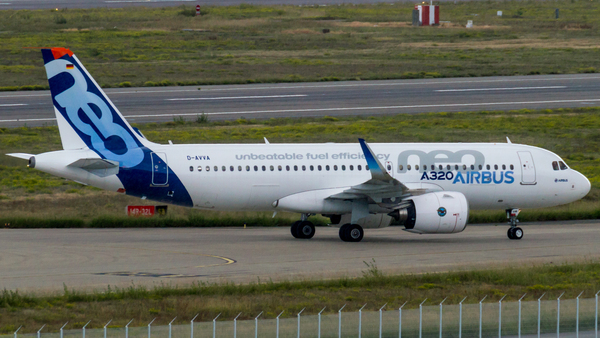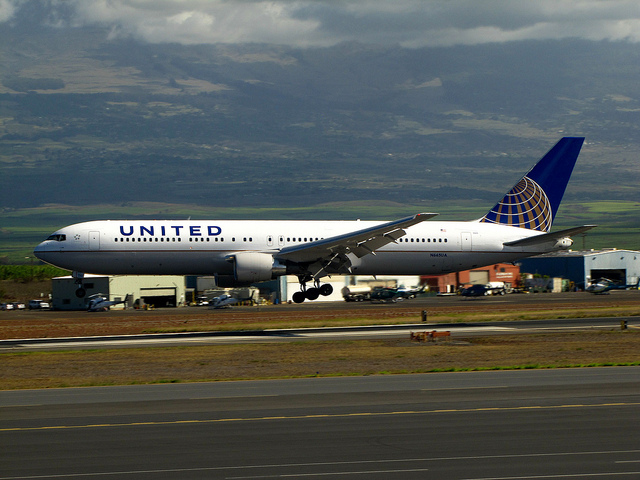Sriwijaya B735 at Jakarta on Jan 9th 2021, lost height and impacted Java Sea
Last Update: November 10, 2022 / 20:38:36 GMT/Zulu time
Incident Facts
- The corrective maintenance processes of the A/T problem were unable to identify the friction or binding within the mechanical system of the thrust lever and resulted in the prolonged and unresolved of the A/T problem.
- The right thrust lever did not reduce when required by the A/P to obtain selected rate of climb and aircraft speed due to the friction or binding within the mechanical system, as a result, the left thrust lever compensated by moving further backward which resulted in thrust asymmetry.
- The delayed CTSM activation to disengage the A/T system during the thrust asymmetry event due to the undervalued spoiler angle position input resulted in greater power asymmetry.
- The automation complacency and confirmation bias might have led to a decrease in active monitoring which resulted in the thrust lever asymmetry and deviation of the flight path were not being monitored.
- The aircraft rolled to the left instead of to the right as intended while the control wheel deflected to the right and inadequate monitoring of the EADI might have created assumption that the aircraft was rolling excessively to the right which resulted in an action that was contrary in restoring the aircraft to safe flight parameters.
- The absence of the guidance of the national standard for the UPRT, may have contributed to the training program not being adequately implemented to ensure that pilots have enough knowledge to prevent and recover of an upset condition effectively and timely.
The KNKT analysed:
During takeoff, the A/T was engaged in TO/GA mode and after the aircraft was airborne, at altitude of about 2,000 feet, the A/P was engaged in MCP SPD for vertical control and LNAV for lateral control. On these modes, the aircraft automation managed the speed, altitude and track by the preset programmed while on the ground.
When the altitude was about 5,400 feet, the calculated rate of climb was about 3,500 to 4,000 feet/minute and the aircraft speed was about 220 knots, the lateral control was changed from LNAV to HDG SEL. The HDG SEL mode indicated that the aircraft flight path was controlled by selecting the heading on the Mode Control Panel (MCP) by the pilot.
At 07:38:35 UTC, at the altitude of about 7,800 feet, the A/P changed from MCP SPD to V/S mode, and the A/T changed from N1 to MCP SPD. These indicated that the A/T control would be adjusted according to the aircraft speed and the rate of climb value selected by the pilot on the MCP. The calculated rate of climb was about 3,600 feet/minute while the aircraft speed was about 225 knots.
Five seconds after, the calculated rate of climb was reducing to 3,100 feet/minute and the aircraft speed was accelerating. The left thrust lever started to move backwards from 47.5° and the N1 speed of the left engine started to decrease from 92.3%. The right thrust lever remained at 46.2° and the N1 speed of the right engine at 91.8%.
At 07:38:50 UTC, the PM requested a right turn to heading 075° to avoid a weather condition; the request was approved by the Terminal East controller (Air Traffic Control/ATC). With the HDG SEL mode engaged, it was most likely that the PF selected the heading to 075° on the MCP and the A/P responded properly as the aircraft continued to roll to the right.
At 07:39:01 UTC, ATC advised the flight to stop climb at an altitude of 11,000 feet and was acknowledged by the PM. It was most likely that the PF would select the MCP altitude to 11,000 feet.
At 07:39:19 UTC, when the aircraft altitude was about 9,800 feet, with the calculated rate of climb was decreasing to about 2,000 feet/minute, the aircraft speed indicated 230 knots, and the aircraft rolled to the right at an angle of about 15°. The aircraft speed increased to about 238 knots and thereafter remained about 238 knots until the A/P disengaged. The left thrust lever position was on 35° and the N1 speed of the left engine was at 81.5% and continued decreasing while the right thrust lever and N1 speed of the right engine remain unchanged.
In V/S mode, the aircraft automation (A/P and A/T) would control the aircraft according to the selection of aircraft speed and rate of climb on the MCP. The calculated rate of climb maintained about 2,000 feet/minute which most likely due to the selection of the rate of climb on the MCP was 2,000 feet/minute. The aircraft speed being maintained about 238 knots indicated that most likely the speed was selected to 240 knots.
When the aircraft has reached the selected targets of rate of climb and aircraft speed, the aircraft automation system normally would respond by maintaining the rate of climb and aircraft speed by coordinating with the A/T. During the initial climb, the rate of climb was between 3,500 and 4,000 feet/minute and the speed was about 225 knots. The engine thrust required during the initial climb was higher than the engine thrust during climb with HDG SEL and V/S mode, therefore the engine thrust decreased.
Since the right thrust lever position did not move backwards, the left thrust lever decreased more than normal to compensate the engine thrust required in capturing the selected speed and rate of climb. The thrust levers diverged and a thrust asymmetry occurred. Furthermore, the asymmetry became greater over time and eventually resulted in un-commanded roll to left instead of to the right.
The aircraft was delivered to the Sriwijaya Air in 2012. The investigation noted that the since 2013 until the accident flight, there were 65 problems related to the A/T system reported The engineer’s actions in attempting to address the reported A/T problem were dominated by cleaning the connectors (48%). Replacements of several components were also performed. The AML recorded replacement of right engine, however the A/T problems still occurred, this showed that the problem was not related to the engine. The engineer actions did not solve the problem.
The examination to the A/T system related components that were removed from the accident aircraft such as A/T servo and A/T computer, found that the problem was not caused by the failure of these components.
The AML also recorded 61 problems related to the difference of engine parameters between left and right engines, including 32 times of A/T disengagement. Most of the differences in the engine parameters were reported during the aircraft on descent. The AML also recorded the lack of thrust lever movement of the right engine as follow:
- Six pilot reports related to slow response of the right thrust lever to flight idle during descent.
- Two pilot reports related to the right thrust lever hard to move.
The lack response or hard to move the right thrust lever indicated that the thrust control cable experienced friction or binding within the mechanical system.
According to the AML and referring to the AMM, the rectification actions that had not been performed were the examination of the thrust lever control system extending from the throttle control box (in the cockpit) to the torque switch mechanism (in the electronic and equipment bay).
The torque switch mechanism was installed in-line with the engine control cables and servo mechanism. Whenever a problem such as high friction is experienced in the engine control cable, the torque switch will open.
This high friction could be due to the pilots intervening on the thrust lever and the torque switch will then open to allow the pilots’ input on the thrust lever. When the pilots released the thrust lever, the friction will then reduce, and the torque switch will close and A/T control resumes. Similarly, a high enough friction force occurring in the throttle control cable can cause the torque switch to open and the throttle lever stopped being moved by the A/T system until the friction force is reduced.
In the accident flight, the right thrust lever did not move to capture the targets selected on the MCP therefore the left thrust lever continued move backwards to compensate the engine thrust required to capture the selected speed and rate of climb. This condition resulted in the thrust lever asymmetry.
Referring to the previous reported A/T problems, the rectification attempts, and the examination of the removed components, it can be concluded that the A/T system command being unable to move right thrust lever was a result of friction or binding within the mechanical system except the torque switch mechanism.
...
As the flight spoiler position was not recorded in the FDR, Boeing calculated the flight spoiler positions on the accident flight and the 15 March 2020, flight by correlating the spoilers to the control wheel positions recorded on the FDR. These calculations assumed nominal aircraft rigging and a neutral aileron trim setting, which could not be verified for the accident flight.
The FDR recorded at 07:39:40 UTC, the control wheels deflected to the right about 19°, the left aileron deflection down 3.3° and the right aileron deflected up 5.8°, the calculated spoiler deflection was 3.7°, and the aircraft roll angle was 15° to the right. Based on the CTSM design, the A/T should have been disengaged at this time as all requirements were met.
At 07:40:10 UTC, the A/T disengaged. The control wheel deflection recorded on the FDR around the time of A/T disengagement was between 20° and 33° to the right, which corresponds to a calculated spoiler deflection of between 4.14° and 9.47°.
The FDR did not record A/T manual disconnection at the time of the A/T disengaged, meaning that the disengage button on either thrust lever was not used by the crew to disengage the system. While it is possible for the A/T to be manually disengaged using a switch on the MCP, this would not be an expected technique during an upset recovery event. In addition, during the accident flight the thrust levers were not manually moved until 9 seconds after the A/T disengaged. It would seem unlikely that the crew would disengage the A/T manually but then waited 9 seconds to move the thrust levers.
The QAR data of the flight on 15 March 2020, revealed the same A/T disengagement signature as the accident flight. On this flight the control wheel deflection recorded on the FDR around the time of the first A/T disengagement was between 15° and 36° to the right, which corresponds to a calculated spoiler deflection of between 2.15° and 10.88°. The control wheel deflection recorded around the time of the second A/T disengagement was between 32° and 28° to the right, which corresponds to a calculated spoiler deflection was between 9.22° and 7.38°. In both the 15 March 2020 event and the accident event the disconnect occurred at the time when the control wheel first moved beyond the autopilot saturation position.. The QAR also did not record A/T manual disconnection and it would be even less likely that the MCP disconnect switch would be used in both upset events.
In both the 15 March 2020 event and the accident event the A/T disengaged timing showed that, the disengagement occurred at the time when the control wheel moved beyond the A/P saturation position of 5.75° deflection.
At this time, the aircraft had experienced asymmetric thrust that created an uncommanded roll. For these reasons it is unlikely that the A/T disengagement that occurred during the accident sequence was manually performed by the pilot. The analysis of the events found that the CTSM was active to disengage the A/T, however, it occurred late during the accident sequence after the un-commanded roll occurred due to the asymmetrical thrust.
Maintenance records indicated that the previous A/T Computer which was installed on the aircraft during the 15 March 2020 flight, also had a split thrust lever and roll event that was not prevented by the CTSM.
Examination and testing of the A/T Computer that was previously installed on the accident aircraft did not reveal any discrepancies related to split thrust levers or the CTSM logic.
In view that the logic review did not identify any anomaly with the CTSM code and the same non-activation of CTSM occurred on two different A/T Computers that were installed on the accident aircraft, the investigation determined that the A/T Computer is unlikely to be the cause of the CTSM not activating as expected during the accident flight.
The CTSM logic require inputs from the following aircraft sources: N1 left and right, power lever angle left and right, Mach, total air temperature (TAT), static pressure, flaps position, and flight spoiler position left and right. Of these inputs, only static pressure and N1 left and right values can be ruled out directly from FDR data.
The left and right power levers angle is used to derive thrust lever angle to calculate thrust when N1 is invalid. Thrust lever angle is recorded on the FDR.
Since power lever angle is only used if N1 left or right is invalid, and the FDR showed N1 left and right were both valid, the investigation determined it was unlikely that the power lever angle sensing was the reason the CTSM did not activate when expected.
The Mach and TAT signals are both digital signals. Mach is from ADC1, or if invalid, from ADC 2. TAT uses the higher of the two values from ADC1 or ADC2. If both signals are invalid, then the A/T computer will disengage. Mach is not recorded on the FDR. Other data provided by ADC1 that is recorded on the FDR appeared to be reasonable, suggesting that ADC1 was functioning normally. In addition, the Captain’s Mach (left side) indicator, which uses the Mach signal from ADC1, had no recent maintenance writeups, suggesting that the Mach value from ADC1 was reasonable on recent flights. TAT was recorded on the FDR and appeared reasonable on the accident flight. For these reasons it was unlikely that the Mach and TAT input were the reason the CTSM did not activate when expected on the accident flight.
The flaps position signal input to the A/T Computer must be less than 12.5° (corresponds to a flaps operational setting of 10 or less) for the CTSM to operate. The synchro that provides the flaps signal to the A/T Computer is also used by the flaps indicator in the cockpit to position the left flaps needle and to activate the flaps asymmetry alert. Maintenance records do not indicate any recent pilot reports of a flap indicator problem nor flaps asymmetry. For these reasons, the investigation believes it is unlikely that the flaps signal sent from the left flap transmitter was an incorrect value.
The FDR revealed that the flap surfaces were positioned between 0 and 5 degrees for the entirety of the flight. Analysis by the A/T Computer manufacturer revealed that for this flap position range, there is only one flap-related wiring fault that could lead to a condition where the A/T Computer could be engaged but the CTSM function would be inhibited. If wire Vxz to the A/T Computer input was open (not connected), the computer interprets a 0° flap position as 40°. This would inhibit the CTSM when the flaps are at 0°. This failure would only be identified by performing the on-condition “CURRENT STATUS” or “LRU INTERFACE LRRA/FLAP/ALPHA VANE” ground maintenance A/T BITE tests. Maintenance records show that recent A/T Computer ground BITE tests (including on 4 January 2021 and 5 January 2021) were performed and the results were good. Also, the AML recorded that on 26 December 2020, stated “After Bite test L Alpha vane, L DADC & A/T #2 Failure” with no mention of a flaps related failure. It is likely that one of the two A/T BITE tests capable of detecting the open wire condition would have been performed during these recent maintenance activities, and there is no documentation from these maintenance activities that identifies a flap related failure.
If the open wire condition was present on both the accident flight and the 15 March 2020 flight, the CTSM would not have triggered on these flights. If the open wire condition was intermittent, it would seem unlikely that the CTSM activation would occur during such similar circumstances of high deflection of flight spoilers. The investigation believes that flaps related failure or flaps open wire condition were unlikely to have been present on the accident flight.
The CTSM logic requires a left or right flight spoiler position input value of 2.5° or greater to activate. If either left or right flight spoiler position signals are invalid the logic will assume the spoiler position is greater than 2.5° and will allow the CTSM to activate if the remaining logic is met. The flight spoiler positions were not recorded on the FDR. The flight spoiler positions were calculated based on it being nominally rigged at a neutral aileron trim setting, though it could not be verified for the accident aircraft. Regardless, the results showed that the CTSM did not activate when the A/P aileron input reached saturation position, but likely did activate when control wheel input was manually increased beyond the A/P aileron saturation position. The additional control wheel input increased both the aileron and associated spoiler deflection. The only input to the CTSM that would be affected by the change in the control wheel position is the spoiler position signal magnitude. The possibility that the right flight spoiler position signal value read by the A/T Computer was too low to activate the CTSM and resulted in the delay of the A/T disengagement while the A/P was engaged. Therefore, the investigation believes it is possible that the right flight spoiler position signal value read by the A/T Computer was less than 2.5° and resulted in the delay of the A/T disengagement while the A/P was engaged.
The investigation could not determine the cause of the flight spoiler signal value being too low. The multiple sources that possibly caused a too low of the flight spoiler signal value, including a mis-rigged or erroneous spoiler sensor, mis-rigged spoiler actuator, or a sheared or damaged spoiler linkage.
The Sriwijaya Air advised to the investigation that flight spoiler sensor rigging had never been performed on PK-CLC aircraft while being operated by Sriwijaya Air as it never met the requirement to do so.
Pilot Recognition of the Aircraft Problem
At 07:38:40 UTC, when the aircraft was climbing through an altitude of about 8,100 feet in a right roll of about 20° following the pilot heading selection and passing a heading of 348°, the left thrust lever started to move backward while the right thrust lever remained unchanged on climb power. Subsequently, the thrust levers split resulted in the asymmetric engine power and the aircraft was unable maintain the right turn as commanded by the A/P.
Because the thrust levers are back driven by the A/T system, the thrust lever positions were not physically symmetrical and the engine instruments such as N1, EGT, N2, and Fuel Flow of the left and the right engines indicated differences. Had the crew noticed the engine parameters displayed on the Engines Instrument Primary Panel and at the physical thrust levers, it should have been a cue for the pilots to identify that the asymmetric power occurred.
The QAR data showed 7 occurrences of thrust levers split prior to the accident and based on the interviews none of the pilots noticed these until other indications were detected. The simulations performed in Jakarta and Las Vegas showed that the pilots did not realize the thrust levers split, until they noticed the engine parameters when they scanned the instrument panels. The thrust levers positions that were split might not have been monitored by the pilots as no engine power change required during this phase of the flight.
At 07:39:48 UTC, when the aircraft was climbing past altitude about 10,450 feet, on heading 046°, the aircraft was approximately wings level. Thereafter, the aircraft rolled to the left and reached a roll angle of 7° to the left at 07:39:54 UTC. The A/P remained engaged on V/S and HDG SEL mode, which was based on the last ATC clearance, and the intended heading was 075°.
The reduction in aircraft roll angle to wings level and continued to roll to the left would have been displayed on the EADI. The roll attitude of less than 5° would have attracted the pilot’s attention as it was much shallower than normal roll angle of about 20°.
The FCOM stated that at or above 10,000 feet, the pilot should set the landing light off and set the passenger sign as needed. When the aircraft climbed through an altitude of about 10,100 feet, the altitude alert activated followed by the PM called out “approaching 11,000”, at 07:39:37 UTC, which was a callout to remind the PF that the aircraft was about to reach the assigned altitude. The CVR also recorded that at 07:39:54 UTC, the PM called out “set standard” which was a call out to change the altimeter window from the aerodrome air pressure to standard barometric pressure. One second later, the ATC issued clearance for the aircraft to continue its climb to FL130 and this was acknowledged by the PM.
These pilot activities after the aircraft climbed through a passed altitude of 10,000 feet, might have diverted the pilot attention from monitoring the flight path. The CVR recorded an interval of 17 seconds between the callouts of “approaching 11,000” and “set standard”. During the 17 second interval, the aircraft roll angle was decreasing to wings level and continued rolling to 7° to the left over a period of 6 seconds. The investigation could not determine the pilot activity during this 17 second interval however, this period should provide sufficient time for the pilots to revert to monitoring the flight path.
During the departure, at 07:38:50 UTC, the PM requested heading deviation for weather avoidance. The BMKG weather information stated that the visibility along the flight track was between 6 and 10 km. These indicated that the weather surrounding the flight path was cloudy. The weather condition might have made the pilot visual horizon which also can be used as a cue of the aircraft roll attitude to the pilot was not available.
According to the FCOM, the duty of the PF included flight path control and navigation, while the duty of the PM included monitoring flight path and navigation. The FCOM also stated that the pilot must always monitor aircraft course, vertical path and speed.
The PF’s duty was to control the flight path and the PM’s duty was to monitor it. The condition of the roll angle decreased to wings level and continued to roll to the left, was not monitored by the pilots even when sufficient time was available. The available cues were thrust lever position, engine instrument indications, and the aircraft attitude displayed on the EADI. The visual horizon which could be used as a cue was not available. The investigation could not determine the pilots attention during 17 seconds interval.
The simulation performed in Jakarta showed that the pilots performing the simulation had enough time to monitor the progress of the flight path and recognized the deviation of the flight.
The undetected roll angle indicated that both PM and PF of the accident flight did not perform their duties of monitoring flight path accordingly.
On 15 March 2020, the PF had experienced of asymmetric power which resulted in the aircraft deviating from the desired flight path. This event was successfully recovered and the aircraft continued its flight safely. There was no pilot report to the company and maintenance log write up after this event. It is unknown why the pilots did not report this to the company or write it up in the maintenance log but an event like this should have been reported.
During the accident flight, the pilots had adequate time to identify the aircraft roll angle which displayed on the EADI. However, the pilots did not identify that the aircraft was unable maintain the right turn as commanded by the A/P. This might be an indication that the pilots decreased their active monitoring of the flight path.
The pilot might have considered that monitoring the flight path was not so significant as the aircraft was in automation with the A/P and the A/T engaged and the aircraft automation system was reliable. The experience on 15 March 2020 flight might not change the pilot perception that the aircraft automation was reliable.
During the aircraft climbed passing 10,300 feet, the control wheels were deflected to the right which might be assumed by the pilot that the aircraft was turning to the right.
This might have strengthened the pilot’s belief that the aircraft was on the intended flight path. Under normal circumstances, the control wheel would have returned to a neutral position after the turn was initiated. The control wheel remaining deflected should have alerted the crew that an anomaly was present. However, because the aircraft was turning to the right and the control wheel was positioned to the right, this could have led to the pilots assuming the aircraft was performing the right turn as commanded and there was no anomaly. This phenomenon is known as confirmation bias when a person seeks information that confirms one’s belief and disregards information that does not confirm one’s belief.
The confirmation bias might have also contributed to the decreasing of active monitoring by the pilot.
The complacency that the aircraft automation system was reliable and the confirmation bias assuming that the aircraft was performing the right turn as commanded might have decreased the pilot active monitoring.
Upset Recovery After Bank Angle Warning
At 07:39:48 UTC, the A/P remained engaged on HDG SEL mode, which was based on the last ATC clearance, and the intended heading was 075°. The aircraft was climbing passing altitude about 10,450 feet, on heading 046°, the aircraft wing was about at level position thereafter, the aircraft rolled to the left.
According to the QRH, the definition of upset condition was any time when an airplane is deviating from the intended aircraft state. An aircraft upset can involve pitch or roll angle deviations as well as inappropriate airspeeds for the condition. In this case, the aircraft’s wings level and began turning to the left is considered deviation from its intended heading was an indication of an aircraft upset condition. There was no pilot action taken in response to this aircraft upset condition.
At 07:39:59 UTC, the PM read back the ATC instruction to climb to FL130 (altitude of 13,000 feet). At this time the aircraft was passing the altitude of 10,550 ft, the rate of climb was about 950 feet/minute, the aircraft heading was on 036°, and it already rolled to the left with an angle of 24° bank, instead of banking to the right. The control wheel position was deflected to the right at an angle of 19,2°.
The ATC instruction to climb to FL130 was confirmed by the PF and reconfirmed by the PM at 07:40:03 UTC. At the time when the PM reconfirmed climb instruction to the PF, the EGPWS Bank Angle warning activated. This warning was triggered by the aircraft roll angle that was 37° to the left.
In order for the aircraft able to fly to FL130, the PF should change the altitude window on the MCP from the previous altitude clearance of 11,000 feet to 13,000 feet. The PF confirmation of the ATC clearance should have been followed by the PF action to select the altitude window on the MCP. Therefore, the PF most likely was looking to the MCP when the Bank Angle warning was active.
At 07:40:05 UTC, the A/P was disengaged by the activation of stabilizer trim switch as recorded on the FDR and the A/P disengage aural warning on the CVR. After the A/P disengaged, the control wheel position moved to the left on an angle between 10° to 18° for four seconds as the aircraft continued to roll to the left. As the A/P was no longer engaged and controlling the aircraft, therefore, the control wheel movement was likely induced by the pilot.
Based on the previous analysis topic (subchapter 2.2.1), it is unlikely the pilots were performing active monitoring prior to the upset where the EADI provided the necessary indications to roll right to level wings, the pilot might have decreased their active monitoring. Also, the PF might be focusing on the MCP to make input changes in the altitude window which might have altered the pilot’s attention from the EADI resulting in the PF not being able to identify the aircraft roll attitude. While disengaging the A/P by activation of the manual electric trim, the PF hands might have felt that the control wheel was deflecting to the right.
These conditions might have created false assumption to the PF that the aircraft was still turning to the right and having not monitored the EADI, the PF might not be aware that it was the aircraft roll attitude that triggered the warning.
The condition of engine asymmetric power that led to the yaw and roll to the left was countered by the aileron and flight spoiler that were commanded by the A/P to turn the aircraft to the right. Disengaging the A/P has eliminated the aileron and flight spoiler forces to counter the asymmetric power therefore, the yaw and roll forces of the power asymmetric had become greater to roll the aircraft to the left. Four seconds of pilot action to turn the control wheel to the left increased the roll tendency of the aircraft to the left.
The Bank Angle warning, which is an indication of excessive roll angle, is an abnormal or hazardous condition that required to be corrected immediately. The sudden audible alert of the Bank Angle warning might surprise the pilots and followed by the immediate PF disengaging the A/P suggested that the PF could have been startled.
The PF might not be aware of the correct aircraft roll angle and the asymmetric power that caused the abnormal roll condition. The deflection of control wheel to the right and having not monitored the EADI might have made the pilot assumed that the aircraft wasrolling excessively to the right and in response, the PF deflected the control wheel to the left to counter it. The initial four seconds of the pilot action after the disengagement of the A/P was not an appropriate response to the condition. The control wheel activation to the left created more rolling tendency to the left and it was contrary to restore the aircraft to safe flight parameters.
...
Maintenance Management
On 20 December 2020, the reported A/T problem was entered in the Deferred Maintenance Item (DMI). The DMI was closed on 30 December 2020 after replacement of the A/T computer. On 3 January 2021, the A/T was reported as unserviceable. The engineer rectified the problem by cleaning the A/T computer and the BITE test result showed “no fault”. On 4 January 2021, the A/T problem was again reported and entered in the DMI which was closed on 5 January 2021 after cleaning the TOGA (Takeoff/Go Around) switch. The flight data of the flights on 7 January 2021 and the accident flight, showed asymmetric thrust power events which indicated that the A/T system problem remained after the rectification on 5 January 2021.
The reported A/T problem was repeatedly deferred as DMI from 20 December 2020 to 4 January 2021. The DMI was first raised on 20 December 2020 and was rectified and closed on 30 December 2020. But the defect was reported again on 3 and 4 January 2020 and DMI raised again which indicated that the A/T problem was not properly rectified.
Maintenance records indicated that rectifications performed by line maintenance engineers of similar problem since 2013 were by carrying out a BITE test. After the BITE test result showed “no faults”, the engineers stopped the trouble shooting process and signed off the defect without progressing to the steps of carrying out the “INTERACTIVE TEST” in the FMC CDU menu.
The Sriwijaya Air maintenance management established the MCC which has
responsibilities including monitoring the defect and DMI rectification. The progress of DMI rectification was recorded and monitored through DMI control/summary. The DMI control/summary was collected and review by the MCC on daily and weekly basis. MCC should have a process in place to identify and definitively resolve recurring maintenance issues.
It is likely that line maintenance engineers were not made aware of the recurring A/T problem on this aircraft and have been performing the BITE test to clear the defect.
As such further trouble shooting efforts should be initiated by MCC who has been monitoring for recurring defects under its maintenance management program.
However, the monitoring efforts by MCC did not appear to have raised awareness amongst the line maintenance engineers of the recurring A/T defect and the additional trouble shooting steps in the “INTERACTIVE TEST” function in the FMC CDU menu.
It is evident that the recurring defect monitoring efforts under the maintenance management program has not been implemented effectively given the prolonged unsolved A/T defect on the accident aircraft.
This article is published under license from Avherald.com. © of text by Avherald.com.
Article source
You can read 1 more free article without a subscription.
Subscribe now and continue reading without any limits!
Read unlimited articles and receive our daily update briefing. Gain better insights into what is happening in commercial aviation safety.
Send tip
Support AeroInside by sending a small tip amount.
Related articles
Sriwijaya B738 at Makassar on Jan 8th 2021, engine problem
A Sriwijaya Boeing 737-800, registration PK-CRI performing flight SJ-591 from Makassar to Jakarta (Indonesia), was climbing through about 17,000 feet…
Sriwijaya B738 at Dili on Dec 15th 2018, compressor stalls on departure
A Sriwijaya Boeing 737-800, registration PK-CRE performing flight SJ-271 from Dili (East Timor) to Denpasar (Indonesia), was climbing out of Dili's…
Sriwijaya B738 at Dili on Jan 7th 2019, flaps problem
A Sriwijaya Boeing 737-800, registration PK-CLT performing flight SJ-270 from Denpasar (Indonesia) to Dili (East Timor) with 110 people on board, was…
Sriwijaya B733 at Manokwari on May 31st 2017, overran runway on landing, nose gear collapsed
A Sriwijaya Boeing 737-300, registration PK-CJC performing flight SJ-570 from Sorong to Manokwari (Indonesia) with 146 passengers and 6 crew, landed…
Sriwijaya B738 near Guangzhou on Feb 22nd 2017, door open indication
A Sriwijaya Boeing 737-800, registration PK-CMT performing flight SJ-1159 from Guangzhou (China) to Denpasar Bali (Indonesia) with 180 passengers and…
Newest articles
India A20N at Delhi on Nov 27th 2025, cargo smoke indication
An Air India Airbus A320-200N, registration VT-EXO performing flight AI-2939 from Delhi to Ahmedabad (India) with 170 people on board, was climbing…
United B763 near Boston on Nov 27th 2025, airspeed indication problem
A United Boeing 767-300, registration N665UA performing flight UA-934 from Newark,NJ (USA) to London Heathrow,EN (UK), was enroute at FL300 near…
Subscribe today
Are you researching aviation incidents? Get access to AeroInside Insights, unlimited read access and receive the daily newsletter.
Pick your plan and subscribePartner

ELITE Simulation Solutions is a leading global provider of Flight Simulation Training Devices, IFR training software as well as flight controls and related services. Find out more.
SafetyScan Pro provides streamlined access to thousands of aviation accident reports. Tailored for your safety management efforts. Book your demo today
AeroInside Blog
Popular aircraft
Airbus A320Boeing 737-800
Boeing 737-800 MAX
Popular airlines
American AirlinesUnited
Delta
Air Canada
Lufthansa
British Airways

